Gardening is Good Exercise so Let’s Do More
March 15th, 2024 | Categories
Gardening is not just a joyful hobby; it’s also an activity that can significantly contribute to your overall health and fitness. If you have green fingers, you might not even realise that those hours spent planting, weeding, and pruning are doing your body a world of good. It’s exercise! But just how is gardening beneficial in terms of physical health, and how does it measure up against more traditional forms of exercise?
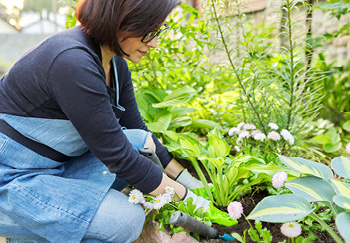
The Squire’s team are putting gardening under the fitness microscope and exploring the ways in which this wonderful hobby can improve your well-being, bolster strength, and supplement your workout routine. Whether you are a novice or an experienced gardener, we think you’ll be surprised by the physical rewards gardening brings.
Physical Activity Levels in Gardening
When people think exercise, no doubt what they’ll imagine will be something like running, cycling, or going to the gym. But gardening is also exercise, usually of moderate intensity that engages the entire body, involving movements that replicate a good portion of a fitness workout.
When you’re in the garden, you’re not just planting pretty flowers; you’re lifting and hauling bags of compost, pushing a wheelbarrow, digging that vegetable patch, unloading the shed, mowing the lawn. Generally, tasks involving lots of lifting, stretching, bending, twisting, and plenty of steps throughout. Each activity requires a degree of effort that, when added up over a day, can equal or surpass a brisk walk or bike ride.
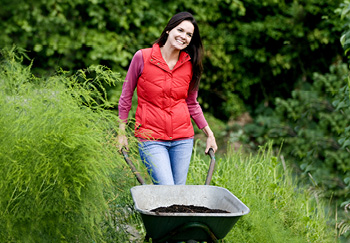
Gardening vs. Walking and Cycling
While other moderate exercise like walking and cycling are typically lauded for their health benefits, gardening shouldn’t be overlooked. Studies have shown that a typical day of gardening can burn as many calories if not more as going for a walk, particularly if the activity being performed requires effort. The varied tasks of gardening mean that you’re constantly engaging different muscle groups, making it a more well-rounded workout than a simple stroll. Gardening also comes with the quirky benefit of not really feeling like you are working out!
Feel the Burn (Calories not the Sun)
So, what does all that mean in terms of calories burned? Well, you can burn a fair amount of calories by gardening.
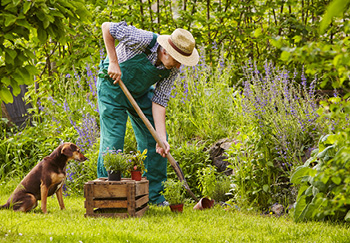
Depending on the intensity and type of gardening task, anywhere between 200 to 600 calories can be burned per hour. For instance, activities like raking and bagging leaves might use up around 300-400 calories per hour, while more strenuous tasks like digging or shovelling can go even higher, comparable to a moderate-intensity gym workout. As a bonus when burning calories through gardening, you get the added benefits of fresh air and vitamin D from sunlight exposure, which aren’t typically obtained from indoor exercise.
Gardening is a Full Body Workout
Gardening tasks like digging, raking, shovelling and lifting pots and compost bags require muscular strength and endurance. These activities not only work the major muscle groups but also the lesser-used ones that often get neglected in other forms of exercise.
Furthermore, digging in the soil is working and toning the arms, shoulders, and back. This strength-building routine can result in increased muscle mass, which also means an improved metabolism and better overall physical function to people of all ages.
Pruning, on the other hand, is a fantastic way to engage your core muscles, promoting better posture and balance. As gardeners know, balance and stability are crucial when navigating tricky flower beds or teetering on a ladder to trim tall hedges.
And let’s not forget about flexibility. Between crouching to plant bulbs and squatting to weed, gardening demands a range of motion that promotes flexibility in the lower back, legs, and hips. Reaching and bending to pull out weeds or snip flowers can help to keep your body flexible, which in turn can prevent injury and facilitate ease of movement in other areas of your life.
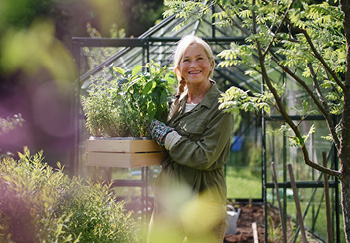
Lastly, these physical bursts of activity involved in tasks like mowing the lawn or lifting bags of compost improve overall cardiovascular health, lower blood pressure, and reduce the risk of chronic diseases such as heart disease and diabetes.
With all that in mind, it might be worth getting into the garden more in the year ahead, right?
Reduce Injuries with a Warm up
Despite its many benefits, gardening can pose some risks, especially if you’re not careful about your technique. Common issues include a back pull, and general strain on the lower back, repetitive strain injuries, and joint pain in the wrists and hands from gripping tools too tightly.

Incorporating regular stretching and flexing activities can reduce stiffness and pain in these areas, ensuring that you can continue to enjoy gardening as well as any other activities you love for years to come.
Other Ways to Reduce Injury
Adopting the right posture and using the correct tools can significantly reduce injury risks. It’s important to take frequent breaks too, stretch before and after gardening, and pay attention to any aches or pains that may signal overexertion.
Using ergonomic gardening tools can also help to protect your body, ensuring you get the most out of your gardening experience without the risk of injury.
Get a Workout in the Garden More Often
So there you have it, gardening is a great hobby – obsession for some of the team here – and aids our physical health too. It’s not going to replace other forms of exercise of course; going to the gym, walking, running, hiking, cycling and more will always still have their place, but don’t think a day in the garden is a day lost.
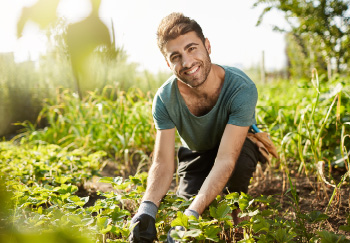
Gardening can be particularly beneficial for mental health too, offering a break from the stresses of everyday life, and engaging with nature has been linked to improved mood and reduced symptoms of depression. With all these amazing benefits to our health and wellbeing, why not try to get into the garden more this year ahead!






